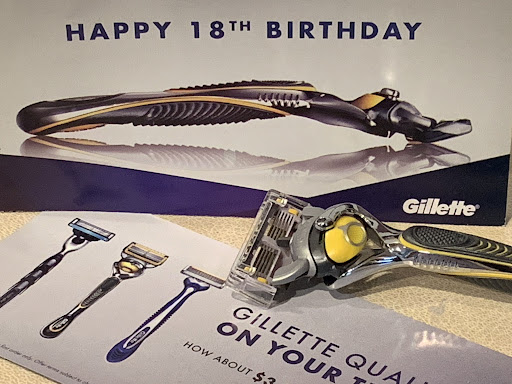Play-Doh: Repositioning from Soot Remover to Toy

With correct customer insights, Play-Doh was able to reposition to resounding success that has stood the test of time
The main offering of Cincinnati-based Kutol Products, which the McVickers founded in 1912, was a soft, malleable product for removing soot from wallpaper.
By the turn of the twentieth century, Kutol Products had grown into the world’s leading producer of wallpaper cleaning. However, things started to change in the 1950s. Sooty accumulation on wallpaper became a thing of the past as many houses made the switch from cleaner fuels like oil, gas, and electricity to cleaner ones, replacing dirtier coal.
In 1954, everything flipped.
The brothers McVicker were attempting to save the floundering business. Kay Zufall, a cousin of the McVicker brothers, ran a creche just across from the Kutol plant. After reading about the use of non-toxic wallpaper cleaner as a budget-friendly option for making Christmas decorations, she hurried to a shop to get a couple of cans.
Kutol worked well for the art project, and the children had a blast using it. Kay joyfully made contact with Joe McVicker. “The wallpaper cleaner could be a plaything if you wanted to!”
Joe paid attention, which is a plus. After removing the detergent from the dough, Kutol infused it with a subtle almond aroma and applied food colouring.
Joe had proposed the moniker “Kutol’s Rainbow Modelling Compound” for the new toy, but Kay talked him out of it. “Play-Doh” was her suggestion.
So it changed its focus from cleaning wallpaper to becoming a toy.
It was now up to Joe to ensure that children were playing with Play-Doh. Due to the company’s financial troubles, they were unable to afford advertising. Consequently, Joe managed to convince Captain Kangaroo, Bob Keeshan, to meet with him. In return for a 2% royalty, Keeshan consented to use the product with Captain Kangaroo weekly.
It was a successful advertising campaign. To this day, Play-Doh is just as popular as it was when it first came out. Play-Doh has sold over three billion cans!
In 1956, Play-Doh was only available in white. However, the company quickly branched out to offer other basic hues, including red, blue, and yellow. Rose Red, Purple Paradise, Garden Green, and Blue Lagoon are among the many colours available currently. Metallic and glittering hues are available in the Putty collection. Over time, the formula has undergone several little adjustments. So that the product wouldn’t dry up as fast, the salt content was lowered. Still, the proportions of the ingredients have mostly not changed.
Certainly, the Play-Doh modelling compound has become a modern-day phenomenon in the realm of play. The now-owned Hasbro brand is based on an unintentional idea that has become a global phenomenon, providing children all over the globe with a chance to express their imagination while also having a good time.

Insights into Repositioning from Play-Doh
As the market shifts, repositioning is inevitable.
- Far too many businesses become enamoured with their product and its intended use. Other options aren’t visible to them, or they just can’t see them. Thankfully, Kutol saw this coming and avoided it. A fresh perspective allowed them to change their focus from wallpaper cleaning to a whole new category of toys.
- Being adaptable and receptive is the name of the game. Get to know individuals in diverse fields and outside of your organisation. Inquire about their experience with your service or product. Novel product use cases are often revealed via conversations with consumers.
Focus your brand on the right people
- Kutol adopted the catchy term “Play-Doh” to appeal to educators, parents, and children and relegated the dull but descriptive “modelling compound” classification to a subheading, although it is still on the label. For aesthetic purposes, they also added red, blue, and yellow colouring. They also made it evident that it was competing with unclean and untidy clay.
- Features, packaging, messages, testimonials, collateral, etc. of your product must all be in sync with your target market.
Look at novel ways to market the product
- Gaining customers and market traction is achieved via channel-to-market. To reach your ideal customer, you need to go beyond the box and be receptive to specialised channels.
- Play-Doh’s product placement on Captain Kangaroo was a stroke of genius that catapulted the company from relative obscurity to national prominence.
Inspire your prospective customers
- They could be stubborn about changing their minds. As a result, customers could have trouble visualising the benefits of using your ground-breaking solution right away. That is why it is crucial to have excellent positioning, messaging, demonstrations, and use cases.
- An early Play-Doh TV ad illustrated the “use cases” of the product. Onscreen, viewers saw both school use and children’s play with it at home. Commercials featuring children enthusiastically moulding and shaping Play-Doh with spaghetti presses and other accessories were airing as the firm expanded its product line.
Fortune reports that since its introduction as a toy for children in 1956, Play-Doh has sold over 3 billion cans, far surpassing its prior use as a wallpaper cleaner. That is above 700 million pounds. If all the Play-Doh compounds made since 1956 were fed into the Play-Doh Fun Factory playset, according to urban legend, “you could make a snake that would wrap around the world 300 times,” claims Hasbro on the Play-Doh website.
Reference
https://www.smithsonianmag.com/innovation/accidental-invention-play-doh-180973527/



